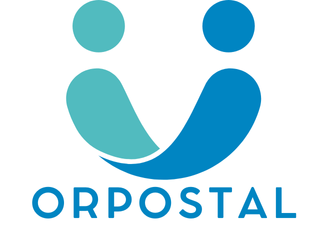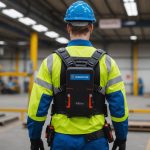Transforming Workplace Safety: The Role of Exoskeletons in Minimizing Occupational Injuries for UK Workers
The Growing Need for Workplace Safety
Workplace safety has never been more critical, especially in industries where physical labor is paramount. The International Labour Organization (ILO) reports that approximately 2.3 million people lose their lives annually due to work-related accidents or health issues, highlighting the urgent need for innovative solutions to enhance workplace safety[4].
In the UK, various industries such as construction, manufacturing, and healthcare are particularly vulnerable to workplace injuries. Musculoskeletal disorders, for instance, are a common issue, often resulting from repetitive tasks, heavy lifting, and poor ergonomics. Here, the integration of exoskeleton technology is poised to make a significant impact.
Also to read : Natural feathers: unlocking sustainable style for every home
What are Exoskeletons and How Do They Work?
Exoskeletons, or wearable robots, are designed to enhance workers’ physical abilities, allowing them to perform tasks with less effort and reduced risk of injury. These devices can be passive or active, with the latter using motors and sensors to provide additional support and stability.
In a care setting, for example, AI exoskeleton technology has been successfully trialled to reduce back problems and workplace injuries. These wearable devices interpret biometric data to assist employees in physically demanding roles, minimizing strain and lowering injury risks[1][4].
Additional reading : Unlocking Efficiency: The Role of AI Tools in Transforming the UK”s Public Sector
Industry-Specific Applications of Exoskeletons
Construction Industry
The construction industry is one of the most physically demanding and hazardous sectors. Workers often face risks such as heavy lifting, bending, and working at heights. Exoskeletons have been game-changers here, supporting the back, shoulders, and knees, and promoting better body alignment and posture.
For instance, next-generation exoskeletons are being designed with softer, more flexible materials that fit human anatomy and biomechanics, making them more comfortable and effective for construction workers. These smart exosuits use sensors, actuators, and algorithms to monitor worker performance, catch unsafe movements, and detect fatigue, providing real-time feedback[3].
Manufacturing Sector
In manufacturing, exoskeletons are transforming assembly lines by empowering workers, improving ergonomics, and enhancing safety. By increasing automation and providing real-time data, these devices help in reducing waste, improving quality, and lowering levels of absenteeism due to injuries.
Companies like Toyota and Ford have conducted research on exoskeletons, demonstrating an 83% reduction in injuries among users. These devices can provide an extra 30 kg of force, enabling workers to execute physically challenging tasks more safely and efficiently[4].
Healthcare Sector
Healthcare is another industry where ergonomics play a crucial role in employee health. Caregivers and healthcare workers often suffer from musculoskeletal disorders due to the physical demands of their jobs. Exoskeletons are being integrated into healthcare settings to support workers in tasks involving lifting and bending.
Healthcare organizations are prioritizing ergonomic training and equipment to discourage slouching and hunching. Exoskeletons are part of this initiative, helping to alleviate fatigue and reduce the risk of developing conditions like carpal tunnel syndrome[3].
Benefits of Exoskeleton Technology
Enhanced Safety and Reduced Injuries
One of the primary benefits of exoskeleton technology is the significant reduction in workplace injuries. By providing additional support and stability, these devices help workers avoid musculoskeletal disorders and other injuries related to physical strain.
- Reduced Musculoskeletal Disorders: Exoskeletons support the back, shoulders, and knees, reducing the strain on these areas during physically demanding tasks.
- Improved Posture: These devices promote better body alignment and posture, minimizing the risk of injuries related to poor ergonomics.
- Real-Time Feedback: Smart exosuits provide real-time feedback on worker performance, catching unsafe movements and detecting fatigue[3][4].
Increased Productivity
Exoskeletons not only enhance safety but also boost productivity. Here are some ways they achieve this:
- Enhanced Physical Abilities: These devices provide additional force, enabling workers to perform tasks more efficiently.
- Reduced Fatigue: By minimizing strain and providing real-time feedback, exoskeletons help workers stay energized and focused throughout their shift.
- Improved Quality: With reduced fatigue and improved ergonomics, workers can maintain higher quality standards in their work[2][4].
Economic Benefits
The economic benefits of exoskeleton technology are substantial. Here are a few key points:
- Reduced Absenteeism: Lower injury rates lead to fewer absences, resulting in cost savings for employers.
- Lower Insurance Costs: With fewer workplace injuries, insurance costs decrease, providing a significant economic advantage.
- Quick ROI: The payback period for exoskeleton technology is often less than one year, making it a financially viable investment[2].
Challenges and Future Directions
While exoskeleton technology holds tremendous promise, there are several challenges and considerations that need to be addressed.
Regulatory Framework
Currently, there is a lack of regulations governing the use of exoskeletons on factory floors. A proper regulatory framework is necessary to ensure that safety requirements are met and that the technology is used responsibly[2].
Public Perception
There is a lingering negative perception that machines are replacing human workers rather than assisting them. Educating the public and workers about the benefits of exoskeletons can help mitigate this concern.
Technological Advancements
The future of exoskeleton technology is closely tied to advancements in artificial intelligence (AI) and machine learning. As AI evolves, we can expect to see more intelligent and autonomous exoskeletons that work seamlessly with human workers.
“As significant cost benefits in terms of productivity and insurance for workers propel exoskeleton technology forward, several players are offering innovative solutions,” notes Vijay Natarajan, Research Analyst at Frost & Sullivan. “The evolution of artificial intelligence and machine learning will eventually result in intelligent autonomous robots that sense surroundings and work effectively with human beings to initiate multi-fold levels of efficiency”[2].
Practical Insights and Actionable Advice
For employers considering the adoption of exoskeleton technology, here are some practical insights and actionable advice:
Conduct Thorough Risk Assessments
Before implementing exoskeletons, conduct thorough risk assessments to identify areas where these devices can make the most impact.
Provide Comprehensive Training
Ensure that workers receive comprehensive training on how to use exoskeletons safely and effectively. This includes understanding the device’s capabilities, limitations, and how to interpret real-time data.
Monitor and Adjust
Continuously monitor the performance of exoskeletons and adjust as necessary. This includes updating software, performing regular maintenance, and gathering feedback from workers.
Foster a Culture of Safety
Integrate exoskeletons into a broader culture of safety within the workplace. Encourage workers to report discomfort and pain, and provide regular breaks and ergonomic training.
Exoskeleton technology is revolutionizing workplace safety in the UK, particularly in industries such as construction, manufacturing, and healthcare. By enhancing physical abilities, reducing injuries, and boosting productivity, these wearable devices are transforming the work environment.
As we move forward, it is crucial to address the challenges associated with this technology, including the need for a regulatory framework and public education. With continued advancements in AI and machine learning, the potential of exoskeletons to transform workplace safety is vast and promising.
Detailed Bullet Point List: Benefits of Exoskeleton Technology
-
Enhanced Safety:
-
Reduce musculoskeletal disorders
-
Improve posture
-
Provide real-time feedback on worker performance
-
Catch unsafe movements and detect fatigue
-
Increased Productivity:
-
Enhance physical abilities
-
Reduce fatigue
-
Improve quality of work
-
Enable workers to perform tasks more efficiently
-
Economic Benefits:
-
Reduce absenteeism
-
Lower insurance costs
-
Quick return on investment (ROI)
-
Improved Health and Wellbeing:
-
Alleviate physical and mental strain
-
Promote better body alignment and posture
-
Reduce the risk of developing conditions like carpal tunnel syndrome
-
Technological Advancements:
-
Integration with AI and machine learning
-
Development of smarter, more autonomous exoskeletons
-
Enhanced real-time monitoring and alerts
Comprehensive Table: Comparison of Exoskeleton Benefits Across Industries
| Industry | Primary Benefits | Specific Examples | Potential Risks |
|---|---|---|---|
| Construction | Reduced musculoskeletal disorders, improved posture, real-time feedback | Support for back, shoulders, and knees; detection of unsafe movements and fatigue | Bulky design, need for regular maintenance |
| Manufacturing | Enhanced productivity, reduced fatigue, improved quality | Additional force for tasks, reduced absenteeism, lower insurance costs | Dependence on technology, need for comprehensive training |
| Healthcare | Alleviation of physical and mental strain, promotion of better body alignment | Support for lifting and bending tasks, reduction in carpal tunnel syndrome risk | Limited availability, need for ergonomic training |
| General | Economic benefits, improved health and wellbeing, technological advancements | Quick ROI, integration with AI and machine learning, enhanced real-time monitoring | Regulatory challenges, public perception issues |
Relevant Quotes
- “Exoskeletons will play a critical role in the future of smart factories,” noted Vijay Natarajan, Research Analyst at Frost & Sullivan. “By 2020, firms across most industries will use some form of exoskeleton technology and by 2025, concepts such as HRC will likely replace exoskeletons, resulting in increased collaboration between humans and robots.”[2]
- “The evolution of artificial intelligence and machine learning will eventually result in intelligent autonomous robots that sense surroundings and work effectively with human beings to initiate multi-fold levels of efficiency,” said Natarajan[2].
- “Healthy employees are invaluable assets, regardless of industry. Although pain and discomfort are impossible to eliminate, make it a mission to minimize physical and mental strain to keep the organization’s lifeblood hale and hearty, happy and satisfied.”[3]











